Name Nicholas Spykman | Role Polit. | |
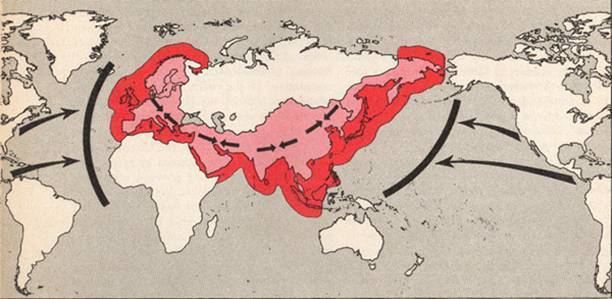 | ||
Awards Guggenheim Fellowship for Social Sciences, US & Canada Books America's Strategy in World Pol, The geography of the pea, The social theory of Georg Si Similar Halford Mackinder, Karl Haushofer, Alfred Thayer Mahan | ||
Geopolitics: Mackinder and Spykman
Nicholas John Spykman (13 October 1893 – 26 June 1943) was an American political scientist who was one of the founders of the classical realist school in American foreign policy, transmitting Eastern European political thought into the United States. A Sterling Professor of International Relations, teaching as part of the Institute for International Studies at Yale University, one of his prime concerns was making his students geographically literate—geopolitics was impossible without geographic understanding. His work on geopolitics and geostrategy led him to be to known as the "godfather of containment."
Contents
- Geopolitics Mackinder and Spykman
- Life and career
- Spykmans geostrategy
- Heartland
- Rimland
- Offshore continents
- Eurasian dynamics
- US strategic goals
- Quotations
- Spykmans works
- References
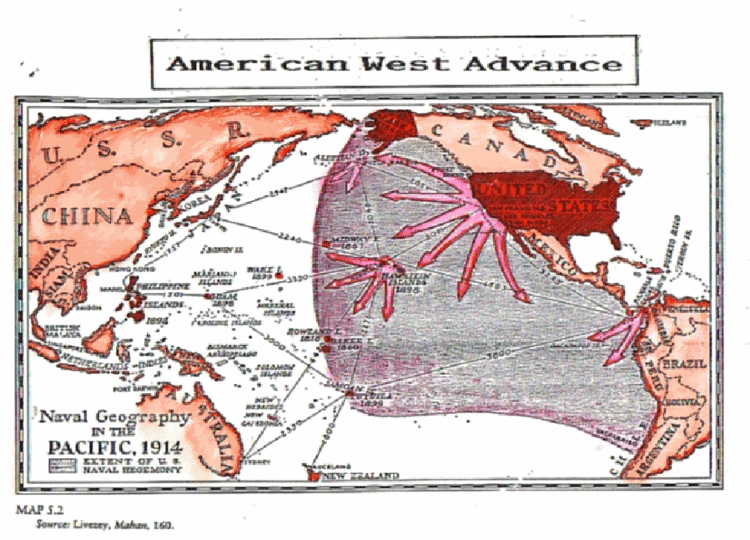
Life and career
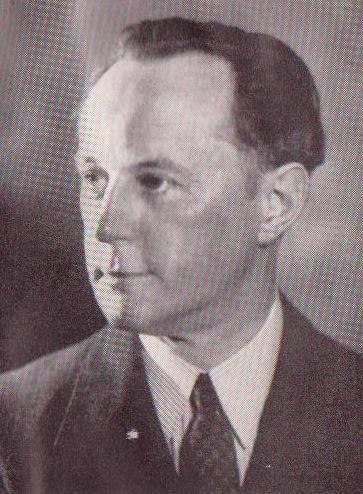
Spykman was born on 13 October 1893 in Amsterdam. He attended Delft University and the University of Cairo. He worked as a journalist in various parts of the world during much of the 1910s and also served as a diplomatic assistant for Holland in Egypt and the Dutch East Indies.

He then came to the United States around 1920 to enter a doctoral program at the University of California, where he received a bachelor's degree in 1921, a master's degree in 1922, and a Ph.D. in 1923. The subject of his dissertation, which he subsequently revised for publication, was Georg Simmel. He then was an instructor in political science and sociology there from 1923 to 1925.
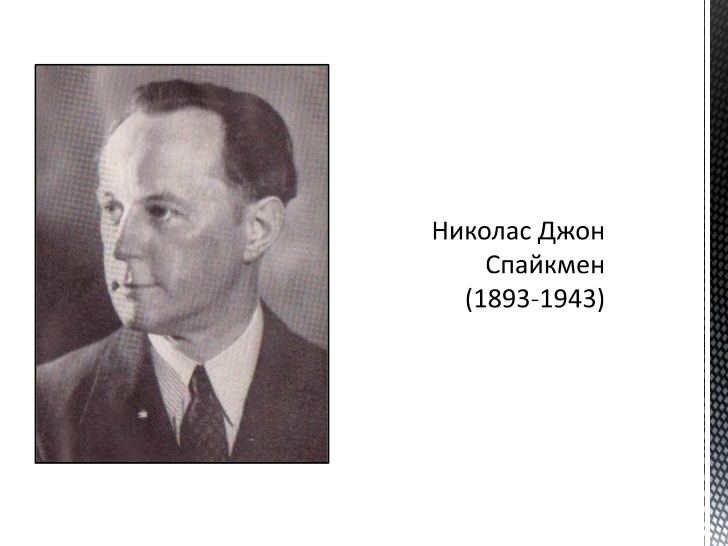
He was married to the children's novelist E. C. Spykman. He became a naturalized citizen of the United States in 1928.
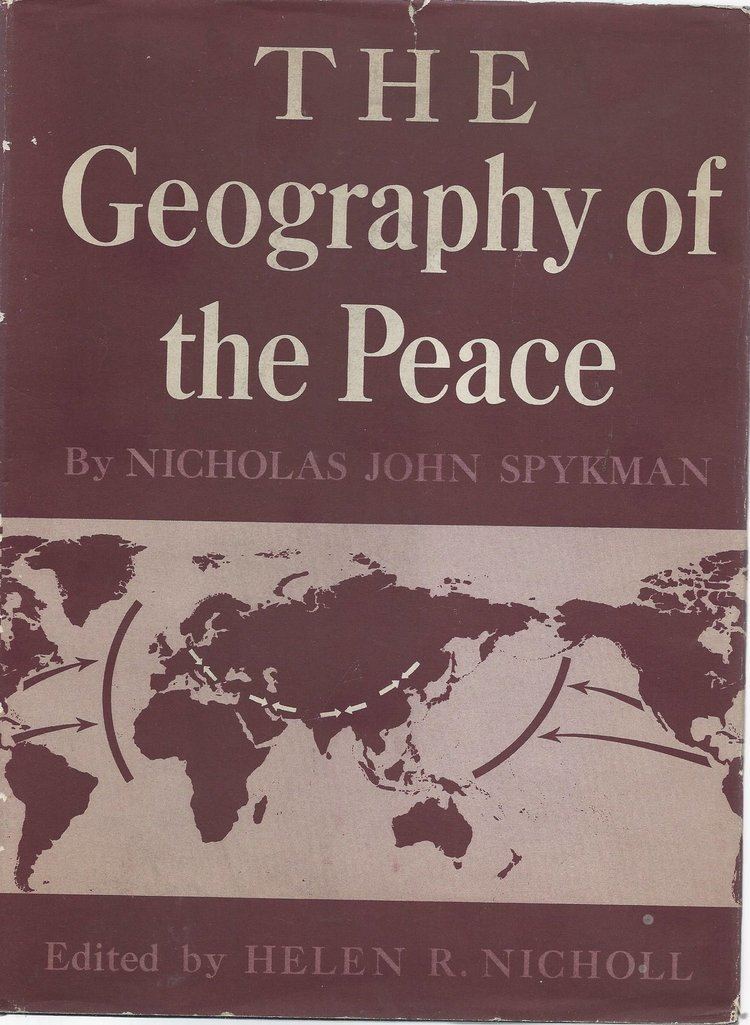
In 1925 he came to Yale University, where he was an assistant professor of international relations, becoming a full professor in 1928. He became the chair of the university's department of international relations in 1935. Also in 1935, he was a co-founder of the Yale Institute of International Studies and was its first director. He held this position until 1940, when he became ill and relinquished it.

Spykman published two books on foreign policy. America's Strategy in World Politics was published in 1942 near the entry of the United States into World War II. Concerned with balance of power, he argues that isolationism, relying on the oceans to protect the United States ("hemispheric" or "quarter defense"), was bound to fail. His object was to prevent a U.S. retreat, similar to U.S. policy following World War I. Isaiah Bowman commented in 1942: "On grounds of merit and public value America’s Strategy in World Politics should be read in not less than a million American home. Every government official responsible for policy should read it once a year for the next twenty years—even if he may not agree with some of the remedies proposed." The Geography of the Peace was published the year after Spykman's death. In it he lays out his geostrategy, arguing that the balance of power in Eurasia directly affected United States security.

In his writings concerning geography and foreign policy, Spykman was somewhat of a geographical determinist. Since geography was "the most fundamentally conditioning factor because of its relative permanence," it was of primary relevance in analyzing a state's potential foreign policy.

He died on 26 June 1943 in New Haven, Connecticut of cancer at the age of 49.
Spykman's geostrategy
N.J. Spykman could be considered as a disciple and critic of both geostrategists Alfred Mahan, of the United States Navy, and Halford Mackinder, the British geographer. His work is based on assumptions similar to Mackinder: the unity of world politics, and the unity of the world sea. He extends this to include the unity of the air. The exploration of the entire world means that the foreign policy of any nation will affect more than its immediate neighbors; it will affect the alignment of nations throughout the world's regions. Maritime mobility opened up the possibility of a new geopolitical structure: the overseas empire.
Spykman adopts Mackinder's divisions of the world, renaming some:
Heartland
At the same time, because he gives credit to the strategic importance of maritime space a Mackinder's. He does not see it as a region which will be unified by powerful transportation or communication infrastructure in the near future. As such, it won't be in a position to compete with the United States' sea power. Spykman agrees that the heartland offers a uniquely defensive position, but that is all Spykman grants the occupier of the heartland.
While the USSR encompassed a great expanse of land, its arable land remained in a small portion of its territory, mostly in the West. Indeed, the Soviet's raw materials were largely located to the West of the Ural Mountains as well. Since the political and material center of gravity was in the Western part of the USSR, Spykman sees little possibility of the Soviets exerting much power in Central Asia.
Still, Russia was to remain the greatest land power in Asia, and could be a peacekeeper or a problem.
Rimland
The Rimland (Mackinder's "Inner or Marginal Crescent") sections:
While Spykman accepts the first two as defined, he rejects the simple grouping the Asian countries into one "monsoon land." India, the Indian Ocean littoral, and Indian culture were geographically and civilizationally separate from the Chinese lands.
The Rimland's defining characteristic is that it is an intermediate region, lying between the heartland and the marginal sea powers. As the amphibious buffer zone between the land powers and sea powers, it must defend itself from both sides, and therein lies its fundamental security problems. Spykman's conception of the Rimland bears greater resemblance to Alfred Thayer Mahan's "debated and debatable zone" than to Mackinder's inner or marginal crescent.
The Rimland has great importance coming from its demographic weight, natural resources, and industrial development. Spykman sees this importance as the reason that the Rimland will be crucial to containing the Heartland (whereas Mackinder had believed that the Outer or Insular Crescent would be the most important factor in the Heartland's containment).
Offshore continents
There are two offshore continents flanking Eurasia: Africa and Australia. Spykman sees the two continents' geopolitical status as determined respectively by the state of control over the Mediterranean Sea and the "Asiatic Mediterranean." Neither has ever been the seat of significant power; chaos prevents Africa from harnessing the resources of its regions, and Australia doesn't have enough arable territory.
Other than the two continents there are offshore islands of significance are Britain and Japan, while the New World, buffered by the Atlantic and Pacific Oceans
Eurasian dynamics
Again, Spykman differs from Mackinder. Mackinder sees Eurasian wars as historically pitting the heartland against the sea powers for control of the rimland, establishing a land power-sea power opposition. Spykman states that historically battles have pitted Britain and rimland allies against Russia and its rimland allies, or Britain and Russia together against a dominating rimland power. In other words, the Eurasian struggle was not the sea powers containing the heartland, but the prevention of any power from ruling the rimland.
Spykman recalls Mackinder's famous dictum,
Who controls eastern Europe rules the Heartland;Who controls the Heartland rules the World Island; andWho rules the World Island rules the World,but disagrees, refashioning it thus:
Who controls the rimland rules Eurasia;Who rules Eurasia controls the destinies of the world.Therefore, British, Russian, and U.S. power would play the key roles in controlling the European littoral, and thereby, the essential power relations of the world.
U.S. strategic goals
Spykman thought that it was in U.S. interests to leave Germany strong after World War II in order to be able to counter Russia's power. Strategically, there was no difference between Germany dominating all the way to the Urals, or Russia controlling all the way to Germany; both scenarios were equally threatening to the U.S.
Spykman predicted that Japan would lose the war in the Pacific, while China and Russia would remain to struggle against one another over boundaries. He also forecast the rise of China, becoming the dominant power in Asia, causing the U.S. to take responsibility for Japan's defense.
Spykman was opposed to European integration and argued that U.S. interests favored balanced power in Europe rather than integrated power. The U.S. was fighting a war against Germany to prevent Europe's conquest—it would not make sense to federalize and thereby unify Europe after a war fought to preserve balance.
John Foster Dulles and the founders of U.S. containment strategy would borrow heavily from Spykman, as well as Mackinder, when forging U.S. Cold War strategy.
Quotations
Spykman's works
Books:
Articles:
